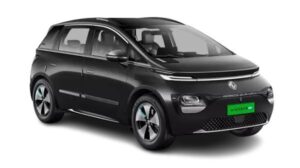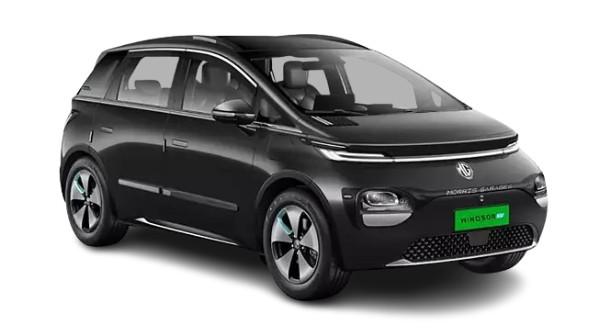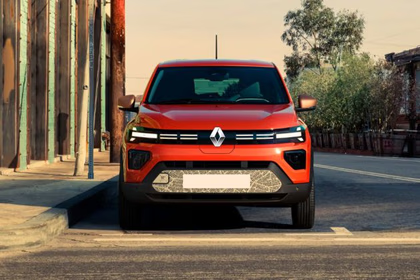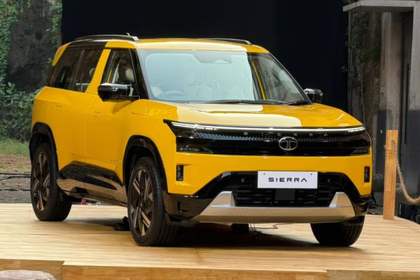Introduction
The dilemma is genuine, as you have many options and might struggle to choose one. Since you can’t get all the options you wish for, select one that suits your personality and needs while providing luxuries and a premium look. MG Windsor EV is revolutionizing India’s electric vehicle market with electric SUVs, which are becoming some of the most vibrant and fastest-growing EVs.
With increasing infrastructure and awareness of sustainability, more Indian customers are looking towards EVs not only for eco-friendliness but also for performance, value, and the latest technology. SUVs, in particular, have resonated with Indian buyers regarding road presence and usability. Manufacturers are reinventing their more sustainable MG Windsor to be more advanced than traditional models in the electric form.
In 2025, electric SUVs will set the benchmark for transformation and innovation. This year marks the launch of several eagerly awaited electric SUV variants into the EV market by both mainstream and luxury players, indicating a strong commitment to an electrified world. Government subsidies, improved battery technology, and fast DC charging are all converging to make 2025 the year India reaches the mass EV tipping point. Hesitant customers now have options that blend familiarity with futurism which is known as MG Windsor EV.
Some of the most highly anticipated launches in the electric SUV segment include the MG Windsor EV Pro, Tata Curvv EV, and Hyundai Creta EV. Each of these models represents a distinct philosophy. MG Windsor EV Pro is expected to provide a premium, tech-forward experience. Tata’s Curvv EV showcases indigenous innovation with a sharp design and cost-effective engineering. Hyundai’s Creta EV builds on India’s bestselling SUV badge legacy, now revived with electric performance. Collectively, they form the center of the next-generation EV SUV battle in India, each striving to dominate a niche that is now mainstream.

Features and technology
Features and technology of all three rival SUV companies, the MG Windsor EV Pro, Tata Curvv EV, and Hyundai Creta EV tech and in-car luxuries are in clear focus, as EV years pass behind are increasingly needed to one-up the game beyond environmental impact alone. All three SUVs should come with a large, high-resolution touchscreen infotainment display with wireless Android Auto and Apple CarPlay and over-the-air (OTA) software updates so you can update your software to the latest and greatest. Voice control, in-car Wi-Fi through license apps, and integrated navigation with live charging station data are now standard across the segment.
There will also be delays in Advanced Driver Assistance Systems (ADAS), which could prove a strong buying point, with automatic emergency braking being a prime example. Still, you’ll also see adaptive cruise control, lane keep assist, blind spot warning, etc, probably up to the higher-spec models. There will also be comfort and convenience amenities such as dual-zone climate control, ventilated seats, wireless charging, a panoramic sunroof, and ambient lighting with customizable colors. With a focus on the almost invisible integration of digital services – a pioneering augmented driving assistance system and luxury touches for the interior of the electric vehicle SUVs – they are being marketed as ethical and tech-fueled lifestyle accessories.
Pricing and Variant
Regarding the cost, the trio of rivals(MG Windsor EV Pro, Tata Curvv EV, and Hyundai Creta ) is trying to walk a line between being a good deal and demonstrating a cutting-edge appeal to a market that spans everyone shopping for electric SUVs. The MG Windsor EV Pro will be priced higher, most likely starting from Rs. 28-30 lakh, as it is expected to be a driving-tech-packed model, relying on premium materials and catering to more creature comforts and ADAS features.
True to form for Tata’s pricing-for-thrift ways, the Tata Curvv EV will be aggressively tagged at the Rs 18- 22 lakh mark, which would make it one of the most affordable packages (s) on offer as a feature-laden EV SUV. On the other hand, the Hyundai Creta EV is expected to sit somewhere in the middle of this price ladder (approximately Rs 22-25 lakh), bringing a familiar design, superior EV architecture, and proven Hyundai quality.
Variant-wise, all three cars are expected to offer a range of trims to cater to different budgets– from low-spec variants with basic amenities to top-spec trims offering body-colored sunroof, large screens for infotainment, and advanced safety features. Tata is expected to provide the maximum number of variations at a low price.
In addition, MG and Hyundai are expected to focus on mid and high-end variations, focusing on luxury, connectivity, and performance. Along with official pricing, consumers can expect lucrative introductory offers and perhaps FAME subsidy benefits that would add to the fantastic value proposition made available to early adopters in 2025.
Comparison between brands
MG Windsor, Tata, and Hyundai have unique brand and market philosophies in the EV SUV space in India. Tech-focused and a premium player, MG Motor has been among the forerunners in the Indian electric car industry with the ZS EV. The likes of the Magnum Pro EV saw MG following suit with a slick, globally influenced design, high-end features, and a lot of city appeal for the middle-high-end buyer, and with the Windsor EV Pro, the brand is probably set to appeal again to that demographic with a flourish.
However, Tata Motors has positioned itself as the strongest player in the Indian EV market, with products like Nexon EV and Tiago EV. And next, it’s the Curvv EV for Tata — an indigenous design-focused compact electric SUV that has promised to wed affordability with a futuristic look set to make it probably the first choice of young buyers and bargain-hunting family buyers battling stagnating incomes. Hyundai enters the battle in the EV SUV space relatively stronger in terms of brand pull for the SUV space, courtesy of the ability to lean on the long-standing Creta success story.
The new Creta EV will attempt to cash in on this confidence by offering a familiar product jazzed with electric propulsion, comfort, a mixed bag, and peace of mind that comes with mass acceptance.
Where MG Windsor aims for a tech-luxury experience, Tata pushes a game of accessibility and innovation built on local engineering. Hyundai is betting on its mass-market appeal — a brand with a reputation for quality and reliability. All three brands’ game plans are interlinked with their larger vision for the adoption of EVs in India, and a three-way contest of will is beginning to play out.
Pros & Cons Summary Table
|
Feature |
MG Windsor EV Pro |
Tata Curvv EV |
Hyundai Creta EV |
|
Price
|
Rs.14 lakh to Rs. 16 lakh. | Rs. 17 lakh to Rs. 22 lakh. | Rs. 18 lakh to Rs. 24 lakh. |
|
Battery & Range
|
38 kWh, 331 km on a single charge. | 45 kWh, 502 km on a single charge. | 42 kWh, 390 km & 51.4 kWh, 473 km. |
|
Charging Speed |
55 min with 50kW DC, 6.5 hours with 7.4kW AC. | 40 min with 70kW DC, 6.5 hours with 7.2kW AC. | DC charger charges in 58 mins, 4 hours with 11 kW AC. |
|
Tech Features |
six airbags, ESC, 360-degree camera, TPMS, etc. | six airbags, hill-hold assist, Level 2 ADAS, etc. | Blind-spot monitoring, ADAS, forward collision warning. |
|
Design & Interior |
9-inch digital driver display, wireless charging, panoramic sunroof. | 12-inch touchscreen, panoramic sunroof, wireless charging, smartwatch connectivity. | Dual touchscreen, wireless charging, Panoramic sunroof, BlueLink connected car tech. |
Conclusion
As the Indian electric SUV market progresses into the era of 2025, it is hard to ignore the MG Windsor EV Pro, Tata Curvv EV, and the Hyundai Creta EV. These three leading players reflect the multi-dimensional and evolving automotive landscape. There’s something for everyone among the offerings, too, from MG Windsor luxury and tech-led approach to the value-conscious and futuristic stylings of Tata, and for those searching for a more established name, Hyundai’s proven history of making cars that plug in.
Ultimately, customers’ decisions depend on personal priorities, range, performance, features, brand perception, or overall value. One thing’s for sure: we now have more compelling EV options than ever before in 2025, and these three SUVs are the benchmark of what Indian buyers can now expect. As it heats up and tech continues to evolve, the electric SUV is no longer just the future; it’s the now, and the reality is it is here to stay.





